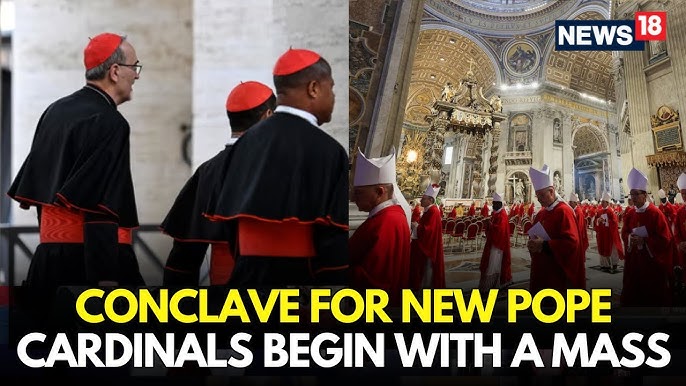Introduction
The conclave/election for new pope is one of the most solemn and secretive events in the world. Rooted in centuries of tradition, it determines the spiritual leader of over 1.3 billion Roman Catholics. From ancient rituals to the dramatic white smoke, the papal conclave captivates global attention. In this blog post, we dive into what happens behind the Vatican’s closed doors when it’s time to choose a new pope.
📜 A Brief History of the Papal Conclave
The word conclave is derived from Latin, meaning “with a key,” referencing how cardinals are locked away to ensure secrecy. The modern conclave was formalized in 1274 by Pope Gregory X to prevent prolonged vacancies and political manipulation.
Throughout the centuries, rules have been refined—most notably in the apostolic constitution Universi Dominici Gregis, issued by Pope John Paul II in 1996 and later updated. Despite modernizations, the spiritual essence remains unchanged: a solemn call for divine guidance in choosing the new leader of the Catholic Church.
👥 Who Votes in the Conclave for New Pope?
Only cardinals under the age of 80 are eligible to vote. This group, known as the cardinal-electors, typically numbers around 120. They come from various countries, reflecting the global nature of the Church.
The electors gather in the Sistine Chapel, where the voting takes place. Though any baptized male Catholic can technically be elected, tradition holds that the new pope is chosen from among the cardinals.
Read Also: “Pope Francis Dies at 88: A Life of Service, Compassion, and Faith”
🕊️ How the Conclave Works: Step-by-Step
Here’s how the conclave/election for new pope unfolds:
-
Mourning Period: Following the pope’s death or resignation, there is a nine-day mourning period (novemdiales).
-
Conclave Begins: The cardinals process into the Sistine Chapel while chanting prayers for divine guidance.
-
Secrecy Enforced: All communication with the outside world is cut off. No phones. No media. Total confidentiality.
-
Voting Rounds: Voting happens up to four times a day. A two-thirds majority is needed.
-
Smoke Signals: After each vote, the ballots are burned. Black smoke = no pope. White smoke = pope elected.
-
Acceptance and Name: Once elected, the new pope chooses a papal name.
-
Announcement: The Senior Cardinal Deacon declares, “Habemus Papam!” (“We have a pope!”) to the world from the balcony of St. Peter’s Basilica.
🔍 Why the Conclave Matters Today
The conclave for new pope isn’t just a historical ritual—it has real-world implications. The chosen pope can influence global policy, interfaith dialogue, and internal Church reforms. In an era of political, social, and moral complexities, the new pope’s direction can shape the Church’s voice for decades to come.
This decision is made in prayerful silence, underscoring the gravity and sanctity of the process.
📺 A Moment Watched Worldwide
The announcement of a new pope is broadcast globally. The crowd in St. Peter’s Square, along with millions online, eagerly watches the chimney for the white smoke. The emotional moment when the new pope appears and offers his first blessing often becomes a defining image in Church history.
✝️ Final Thoughts
The conclave/election for new pope is more than a vote—it’s a divine moment in Church history. It symbolizes unity, faith, and the continuation of a 2,000-year-old mission. Whether you’re Catholic or simply intrigued by global events, the next conclave is sure to be a powerful, historic moment.
💬 What are your thoughts on the conclave process?
Let us know in the comments! If you found this post insightful, consider sharing it with others interested in Church history or religious traditions.
📩 Subscribe to our newsletter for more in-depth content on faith, tradition, and global Catholic news.

